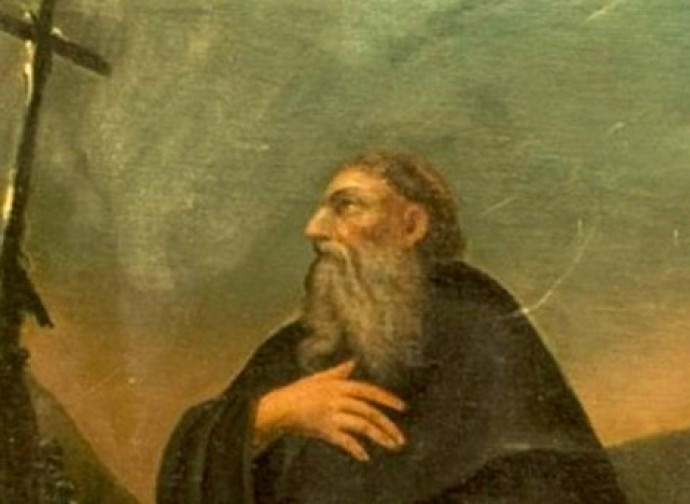Saint Macarius of Jerusalem
Macarius became bishop of Jerusalem in 312, when the Holy City was called Aelia Capitolina. The saint found himself leading the Jerusalemite diocese when the Church, after three centuries of persecution, had finally obtained freedom of worship, but still had to face the various heresies on the Holy Trinity.

Three elements suffice to indicate the greatness of this saint. He is credited with an important role in the drafting of the Nicene Symbol, the first core of our Creed. He was bishop of Jerusalem when Saint Helena found the Cross of Christ and, with the help of grace, was decisive in identifying it. Third, a defender of Orthodoxy such as Saint Athanasius wrote to the Egyptian and Libyan bishops calling Saint Macarius (c. † 335), who had already died at the time of the letter, an example of the “honest and simple style of apostolic men”.
Macarius became bishop of Jerusalem in 312, when the Holy City was called Aelia Capitolina. After the destruction of the Temple in 70, in fact, the Romans had put an end in 135 to the long Jewish revolt led by Bar Kokheba (who many Jews, not having recognized Jesus, had followed believing him to be the Messiah because the times of the prophecy had 'expired'). And, by order of the Emperor Hadrian, they had devastated the city, then rebuilt it and given it its new name and erected pagan temples in place of the ancient holy places. Among these there was one located outside the original city walls, in a burial area. It was there that Christians gathered to commemorate the Passion and Resurrection of Jesus: the Romans covered the site with earth and stones and built a temple dedicated to Venus.
The saint found himself leading the Jerusalemite diocese when the Church, after three centuries of persecution, had finally obtained freedom of worship, but still had to face the various heresies on the Holy Trinity. Macarius, warned by Saint Alexander of Alexandria, vigorously opposed Arianism, as shown in the abusive way in which Arius (denier of the divinity of Christ) spoke of him in a letter to Eusebius of Nicomedia, his fellow heretic. At the Council of Nicaea in 325, together with Saint Eustace of Antioch, Macarius had a fundamental part in the first draft of the Creed, containing the definition of the consubstantiality of Father, Son and Holy Spirit (later completed at the Council of Constantinople in 381). In the same period he invited Constantine to destroy the pagan temples in Jerusalem and it was then that, with the demolition of the temple of Venus and the subsequent excavations, the Holy Sepulchre was rediscovered.
Throughout this work St. Macarius was helped by the Emperor's mother, St. Helena (c. 248-329), who found the Cross, of which there is written evidence in the Catechesis of St. Cyril of Jerusalem, dated between 348 and 350. In his Ecclesiastical History Socrates Scholasticus (born around 380), based on a consolidated tradition learned in his Constantinople, then reported that Helena found three crosses, the nails of the crucifixion, and the Titulus crucis with the three inscriptions in Hebrew, Greek and Latin (cf. Jn 19:20). How was it possible to identify with certainty the true Cross on which Our Lord shed His Blood? Socrates, like his contemporary Christian historians, also reports that Macarius had the three crosses placed, one at a time, on the body of a seriously ill woman: the woman healed miraculously at the touch of the third cross, which was thus identified with the wood on which Jesus was crucified.
Saint Helena then set about the construction of what would become the Basilica of the Holy Sepulchre, on the site of Jesus' crucifixion, burial and Resurrection. Also in this case she collaborated with Saint Macarius, who received a long and moving letter from Constantine, eager to build a magnificent church to reflect “the grace of our Saviour, which no language seems adequate to express”, that is the gift of finding “the monument of his Most Holy Passion”. Writing to him about the columns and marbles, he recommended: “[...] be diligent in sending us information, so that whatever quantity or type of material we deem necessary, according to your letter, can be procured from anywhere, as is required, because it is right that the most splendid place in the world should be worthily decorated”. The churches of the Anastasis (Resurrection) and the Martyrion, which made up the basilica of Constantine, were consecrated on September 14, 335, the day on which the universal Church celebrates the Feast of the Exaltation of the Holy Cross.




